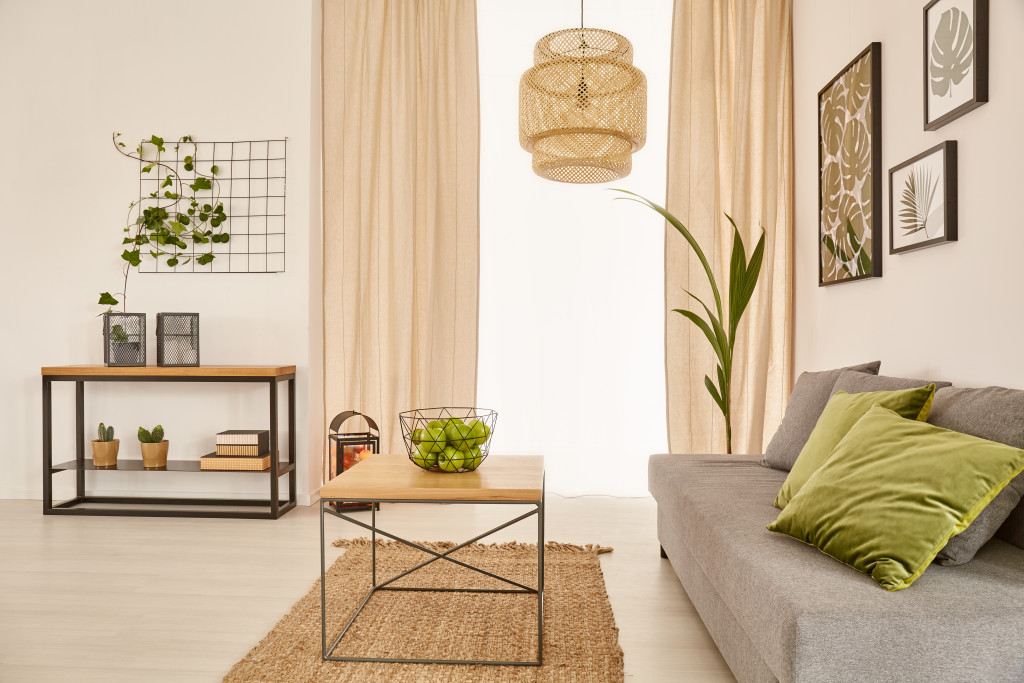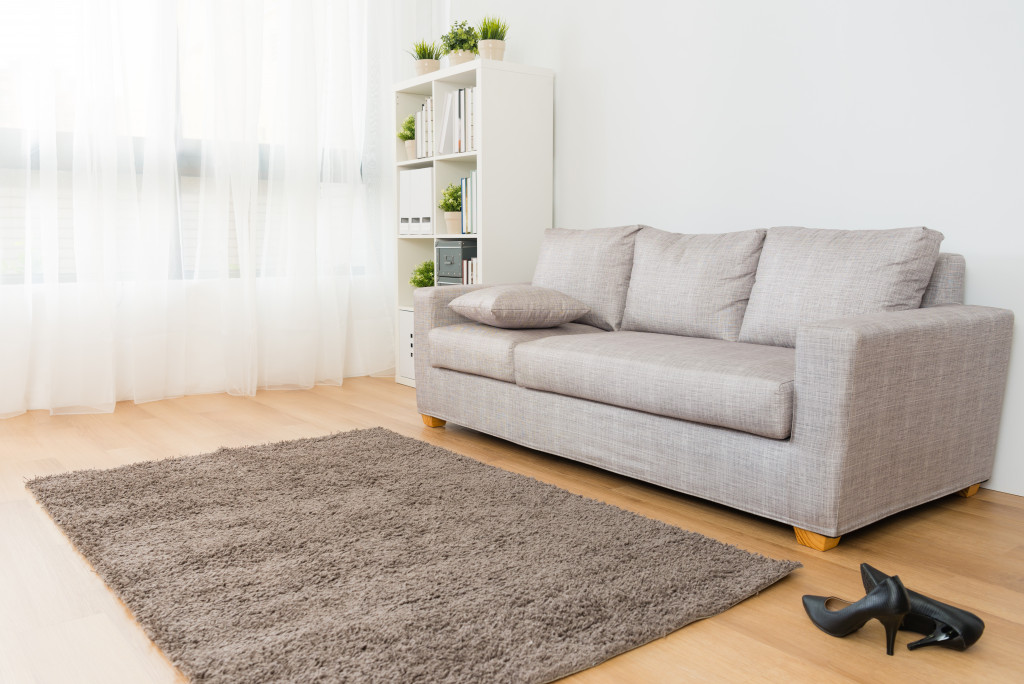- A rustic home design hinges on using natural materials like barn wood, stone, and metals, emphasizing creating a warm, comfortable atmosphere.
- Utilizing earthy colors, typically found in nature, is key to enhancing the organic vibe of a rustic design.
- Investing in rustic furniture pieces and choosing appropriate lighting fixtures contribute significantly to the overall rustic aesthetic.
- Incorporating textured fabrics and accessorizing with vintage finds can add depth, texture, and personality to a rustic home design.
Several factors must be considered when planning to renovate your home with a rustic design. It’s essential to use natural materials, color schemes that give an earthy feel, and furniture that embodies simplicity yet functionality. Opt for materials like reclaimed wood, stone, and metals, for a genuinely rustic aesthetic. Remember, the goal is to evoke a cozy, warm, and down-to-earth ambiance.
Choose Your Materials Wisely
Choosing the right materials is the cornerstone of creating a rustic aesthetic. One of the best choices is Barnwood, a material imbued with its rich history, character, and charm. Barnwood, reclaimed from old barns, exhibits a weathered, antique look that is quintessentially rustic.
Its unique textures, deep grain patterns, and variety of colors can make any space instantly warm, inviting, and full of character. Whether used for interior walls, floors, or furniture, barnwood brings a unique authenticity and timeless elegance to any rustic home design.
Choosing a reputable barnwood supplier is essential to ensure the highest quality of wood and get good value for your money. They can also provide professional installation services to ensure your renovation is done correctly. With the right materials and creativity, you can easily create a rustic home design that will last for generations.
Incorporate Natural Elements
Incorporating natural elements into your rustic home design is a critical aspect that ensures harmony with the surrounding environment. This can be achieved through the following ways:
Opt for Earthy Colors

Earthy colors are a hallmark of rustic design, lending to the organic, natural vibe synonymous with this style. Opt for warm, neutral shades that mimic the colors found in nature—think the brown of tree bark, the green of leaves, the gray of stones, or the cream of sand.
Use these colors as your primary palette for walls, floors, and large pieces of furniture. Smaller accents can be added in deeper shades to provide contrast and additional visual interest. The goal is to create a harmonious, grounded, cozy, and inviting balance.
Invest in Rustic Furniture
When it comes to rustic design, investing in rustic furniture pieces is a must. Often made of barn wood, stone, or metal, such furniture exudes a rugged charm and timeless beauty. The practical design, combined with the natural imperfections of the materials, contributes to a sense of authenticity and warmth.
Whether it’s a barn wood dining table, a stone fireplace, or a wrought iron chandelier, these pieces serve as focal points that truly define the rustic aesthetic. The key is to choose items that are not only aesthetically pleasing but also functional and durable, ensuring they stand the test of time.
Lighting Choices
Lighting choices play a significant role in enhancing the rustic aesthetic of your home. Opt for fixtures that mimic natural light or those made from natural elements such as wood or metal. Ambient lighting, like lantern-style fixtures or candles, can create a warm, cozy glow, reminiscent of an old farmhouse.
Functional lighting, like task lamps with a weathered finish, can add a practical yet charming touch to spaces. Don’t forget accent lights, which highlight your rustic furniture pieces or architectural details, reinforcing your home’s rustic character.
Use Textured Fabrics

A rustic design embraces nature’s raw, rough-hewn beauty, and incorporating textured fabrics is another way to capture that aesthetic. Consider materials like burlap, linen, or chunky knits for throws and pillows. Area rugs with natural fibers like jute or sisal can add warmth and texture to your floors.
Curtains made of raw silk or linen can provide a soft, natural glow when the sunlight filters through. Overall, the aim is to create a tactile experience that enhances the visual appeal of your rustic home, inviting touch and contributing to the overall sense of comfort and warmth.
Accessorize with Vintage Finds
Accessorizing with vintage finds is the finishing touch that makes your rustic interior design stand out. From antique farm tools to weathered signs and vintage photographs, these items tell a story of yesteryears, adding depth and personality to your space.
Their aged patina pairs perfectly with the natural elements of a rustic design, creating a timeless and welcoming atmosphere. A well-chosen vintage accessory can serve as an engaging conversation piece, and sourcing these items from flea markets or second-hand stores can also be a fun and rewarding treasure hunt.
In conclusion, crafting a rustic home design is an opportunity to create a space that emanates warmth, authenticity, and timeless charm. Remember, it’s all about making choices that resonate with your taste and lifestyle. So, why wait? Unleash your creativity, start your rustic home renovation today and transform your space into a cozy and inviting rustic retreat.



